| ||||||||||||||
Shankar Rao Raghunath Deshpande alias Nana Saheb Nimonkar belonged to the 1st generation. He had three sons namely Somanath, Naganath and Ramachandra. The three represented the 2nd generation of Nimonkar’s family. (refer the family tree below).
Under the Blessings and Instructions of Shirdi Sai Baba, Late Shri Nanasaheb Nimonkar was hoisting this sacred flag (orange+green colour with embroided letters) from 1911 to 1920 till he attained the lotus feet of Sai Baba. From then onwards his eldest son late Shri Somnath who was Inspector in Police Department ( C.I.D) in British regime had offered his services for this flag till his death in the year 1960. After his sad demise, his eldest son Late Shri Gopalrao Deshpande Nimonkar (Senior Police Prosecutor, Ahmednagar) was preparing this flag and sending it to Shirdi. After his sad demise in the year 1997, Shri Chandrashekhar Gopalrao Deshpande Nimonkar along with his wife Sau. Smita Deshpande and his younger brother Shri Anant Gopalrao Desphande Nimonkar with the help of other sisters also namely- Smt.Hemlata Joshi, Mangala Honap, Nirmala Dehadraya, Urmila Shool (Deshpande Nimonkar ) are preparing this sacred flag with full devotion and love.
According to Hindu Family Customs and Tradition, all Spiritual and Religious rites are performed by the eldest son in that generation on behalf of the whole family. Hence, the tradition of preparing the Flag and performing the Pooja-Ceremony of this sacred flag is continued by Shri Chandrashekar Gopalrao Deshpande Nimonkar. He is performing this ritual with full devotion since the year 1997 till date. On the auspicious Gudhi Padwa day (Hindu New Year) this Pooja -Ceremony is organised at his Residence in Pune. On Shri Ramnavmi day at Shirdi, after “Lord Rama’s Janma Keertan” programme this flag is spread on Sai Baba’s Samadhi along with the other sacred flag from late Shri Nanasaheb Rasane’s family. Then the Maha Pooja of the Samadhi is performed by offering flowers and garlands, Prasad etc, by both the descendants of Nanasaheb Nimonkar (Deshpande) and Nana saheb Rasane family. Afterwards, Maha Aarti takes place by 12.30 pm. The procession of these two sacred flags starts at 4.00 pm in the evening and by sunset ,the flags are hoisted on the Top of DWARKAMAI (place where Sai Baba lived for 60 years in Shirdi) for whole year till the next Sri Rama Navami. Late Somnath Deshpande Nimonkar’s younger brother, Late Naganath Deshpande’s Grandson Shri Nandkumar Revennath Deshpande Nimonkar also participates in this memorable event.
Sri.Nandakumar Revannath Deshpande is holding the sacred Padukas blessed by Sai Baba and given to Nana Saheb Nimonkar continuing the legacy of his great Grand Father.
Shankar Rao Raghunath Deshpande alias Nana Saheb Nimonkar was a special Magistrate of Sangamner and Village Chief of 5 villages in and around Nimon. He also owned many acres of land in Nimon village and was very affluent and a very influential person. He was married to Jayaji who hailed from Belapur. He left everything in his ancestral village and went along with his wife to Shirdi and settled there permanently to do Saibaba Seva. He was a prominent Sai Mahabhakta whose name finds place in Chapter 6, 12, 20, 23, 25, 29, 37 and 38 of Shri.Sai Satcharitra of Shri.Govind Raghunath Dhabolkar alias Hemadpanth. Nana used to address Saibaba as “Deva”. Nana served Saibaba till his Mahasamadhi with utmost love and passion. Family Photograph of Nana Saheb Nimonkar
Smt.Jayabai Nana Sheb Nimonkar & Shri.Nana Saheb Nimonkar In Chapter 6 of Shri Sai Satcharitra Ovi 54 to 57 narrates the story of Sri Ramanavami Celebrations at Shirdi. Nana Saheb’s name has been mentioned under Ovi’s, 54, 55, 56 and 57. Sri Ramanavami was started by Saibaba in the year 1911 in Shirdi. On the day of Ramanavami, Yatra takes place in Shirdi and all the arrangements were looked after by Tatya Kote Patil and a large crowd used to gather. Devotional Singing and worship used to take place to the accompaniment of drums and other wind instruments. People came and assembled from all the 4 directions of Shirdi in large numbers. Every year, two new flags are ceremoniously carried in procession and tied to the dome of the Dwarakamai and permanently fixed there. The descendants of Damu Anna Rasne supply the green flag, while Nimonkar’s descendants supply the embroidered flag. These flags are kept on Baba’s Samadhi and Aarti is performed to them. Then the Noon Aarti takes place. They are taken to Tukaram Sutar’s house (his surname is Bhalerao and his profession was that of a Sutar or Carpenter). At about 2 p.m.the gheru flags are brought in a procession from Samadhi Mandir to the open area in front of Pilaji Gurav's house. Then the other two flags (The green and embroidered flags) are brought from the Sutar home where they were fixed to a long staff (pole). After Lalkari Laghu Aarti is done. Then all the flags are taken in procession through the village with much dancing and merriment to Dwarakamai. Finally, the two flags (gheru flags – Green and embroidered flags) are fixed atop the Dwarakamai, while the Ochere flag is fixed inside the Dwarakamai.
In Chapter 12 of Shri Sai Satcharitra Ovi 56 to 83 narrates the story of how Saibaba came to the help of Nana Saheb’s wife Jayaji who wanted to go to Belapur as her son was seriously ill and stay there for sometime. She made preparations to go there in consultation with Nana Saheb. She consulted Baba for permission and Baba permitted her to go to Belapur. She informed Nana about the same. Nana agreed but asked her to return to Shirdi on the next day itself. Jayaji was not ready to return on the next day as the next day was Amavasya Day and travelling on Amavasya Day is considered to be inauspicious. Hence, she was in a fix. Saibaba came to her rescue. Baba was standing near Sathewada on his way to Lendi Bagh as Nana Saheb Nimonkar and others had gathered there to have his quick darshan. At that time, Jayaji came and prostrated to Baba and asked permission to leave. Baba immediately told Jayaji to stay in Belapur for 4 days and come back to Shirdi after meeting everyone in there. Baba’s words gave unimaginable peace of mind to Jayaji. Nana Saheb Nimonkar who was standing there also got the hint of Baba’s words. Thus both of them were satisfied with Baba’s answer. In Chapter 20 of Shri Sai Satcharitra Ovi 50 it has been mentioned that Saibaba used to address Nana as “Matare Kaka” . In Chapter 23 of Shri Sai Satcharitra Ovi 40 & 41 reference of Nana Saheb Nimonkar has been made. When Shama (Madhav Rao Deshpande) was bitten by a Snake on his small finger, that part became full of poison. The pain was excruciating and life seemed to be ebbing out. Madhav Rao was frightened and worried. His body started turning red. Friends and relatives who gathered there said “Let us go to Viroba (Viroba is a deity of Maharashtra is another form of Shankar) losing hope of his survival. At that moment, Nana Saheb Nimonkar who was present there also came forward and said that he should take Udi and go. But Madhav Rao Deshpande ran to Dwarakamai Masjid and Saibaba ultimately saved him from the jaws of death just by instructing the poison to get down. In Chapter 25 of Shri Sai Satcharithra Ovi 20 to 25 reference has been made to the celebration of Ramanavami festival. Sri Ramanavami was started by Saibaba in the year 1911 in Shirdi. On the day of Ramanavami, Yatra takes place in Shirdi and all the arrangements were looked after by Tatya Kote Patil and a large crowd used to gather. Devotional Singing and worship used to take place to the accompaniment of drums and other wind instruments. People came and assembled from all the 4 directions of Shirdi in large numbers. Every year, two new flags are ceremoniously carried in procession and tied to the dome of the Dwarakamai and permanently fixed there. The descendants of Damu Anna Rasne supply the green flag, while Nimonkar’s descendants supply the embroidered flag. These flags are kept on Baba’s Samadhi and Aarti is performed to them. Then the Noon Aarti takes place. They are taken to Kondya alias Tukaram Sutar’s house (his surname is Bhalerao and his profession was that of a Sutar or Carpenter). At about 2 p.m.the gheru flags are brought in a procession from Samadhi Mandir to the open area in front of Pilaji Gurav's house. Then the other two flags (The green and embroidered flags) are brought from the Sutar home where they were fixed to a long staff (pole). After Lalkari Laghu Aarti is done. Then all the flags are taken in procession through the village with much dancing and merriment to Dwarakamai. Finally, the two flags (gheru flags – Green and embroidered flags) are fixed atop the Dwarakamai, while the Ochere flag is fixed inside the Dwarakamai. In Chapter 29 of Shri Sai Satcharitra Ovi 157 Nana Saheb Nimonkar’s name has been mentioned. Captain Hate sent some money by post to his friend who had gone to Shirdi. He asked him to buy good quality Shidha and some selected Valpapadi from that money and offer the balance amount of money after purchase as dakshina to Baba. As per Hate’s wish his friend purchased all the required items except Papadi which he could not find in Shirdi. At that moment a Woman was carrying the Valpapadi on her head. Hate’s friend called the lady and purchased all the items from her and offered them with reverence to Sainath Maharaj. Saibaba gave them to Nana Saheb Nimonkar and asked him to cook for Naivedya the next day. The next day when Baba sat down to eat, he did not touch the dal, rice or any other item that was served to him, but instead started eating only Valpapadi. When Hate came to know about the news from his friend he was overjoyed. In Chapter 37 of Shri Sai Satcharitra Ovi 116 to 217 describes the Chavadi Procession that used to take place during Baba’s sojourn in Shirdi in detail. Ovi 189 describes that Nana Saheb Nimonkar held the white Umbrella which moved in a circle on its supporting stick with its pendants and tassels. In Chapter 38 of Shri Sai Satcharitra Ovi 152 to 184 describes the Cooking of food in Dwarakamai Masjid. Ovi 158, 169 and 170 describes that Nana Saheb Nimonkar and Shama used to serve food daily to the devotees in Dwarakamai. After all the food brought by devotees were mixed and offered to God and consecrated, Baba used to fill the platters high, passed it to Nana Saheb Nimonkar and Shama and instructed them to distribute the food to the devotees present in the Masjid. Everyday these two had the fortune of serving the food in the Masjid. The two considered the distribution of the Naivedya as their regular religious work and performed the task with great love. In Chapter 43 & 44 of Shri Sai Satcharitra a mention of Nana Saheb Nimonkar has been made wherein he pours water in the mouth of Saibaba whose body rested on the lap of Bayyaji Appa Kote Patil. The water comes out. Then Nana Saheb Nimonkar shouts “Oh Deva!” at a very high pitch. Nana sees Baba opening his eyes and uttering the word “Haa!”. In Shri Sai Sahasranamavali & Ashtotharam written by His Holiness Shri.Narasimha Swamiji, special mention has been made in verse 521 about the Granting of Holy Padukas by Saibaba to Nana Saheb Nimonkar: The verse and the translation of the same as described in the book are as follows: Verse 521: “Om Shri Sai Nana Nimonkarasyante Svanghri Dhyanalaya Pradaya Namah” Meaning: One who has bestowed spiritual bliss to Nimonkar by granting Padukas. Shri.Nana Saheb Nimonkar was a contemporary mahabhakta of Khedgaon-Bhet Shri.Narayana Maharaj. Bhet Narayan Maharaj had written 4 letters to Shri.Nana Saheb Nimonkar which are displayed below for the benefit of Sai Devotees:
The jist of the four letters are as below: LETTER1: -(05-07-1931) I received your letter and have understood your dilemma. Please go ahead and name your son as "Revannath". My Blessings are always there with you and your family. LETTER 2: -(08-10-1931) I understand your anguish. All your relatives are going for pilgrimage but you are unable to accompany them because your son Revannath is ill, don't worry, you can stay back with your son... Revannath will be fine.My Blessings are always there with you and your family. LETTER 3: -(28th March 1932) Don't worry about your child (i.e. Revannath), he will be fine... Apply the ANGAARA (i.e. Sacred Ash) that I am sending to the child. I repeat, he will be fine.My Blessings are always there with you and your family. LETTER 4: -(16-05-1932) My blessings are in plenty onto your sons. So also God's blessings are there aplenty on your family. Don't worry.Do Nama Smaran. your child will be hale and healthy. Nana Saheb Nimokar passed away peacefully just three months after Shri Sai Baba took Maha Samadhi on the auspicious Pushya Bahula Ekadashi Day i.e., on Monday, 27th Janauary 1919. Sai Devotees who wish to have darshan of Holy Padukas can contact Shri.Nandakumar Revannath Deshpande at the below mentioned address:
(Source: Personal Interview with Shri.Nandakumar Revannath Deshpande Nimonkar on 18th July 2011 at Mysore,Personal Interview with Prof.Hemlata Joshi Deshpande on 2nd April 2015, Shri Sai Satcharitra of Sri.Govind Raghunath Dhabolkar alias Hemadpanth and Sai Sahasranamavali & Ashtottara by Poojya Sri.B.V.Narasimha Swamiji. Photo Courtesy:Prof.Hemlata Joshi Deshpande Nimonkar, Chandrashekhar Deshpande Nimonkar, Pune, Shri.Nagaraj Anvekar, Bangalore & Shri.Jignesh C.Rajput, Surat) |
||||||||||||||

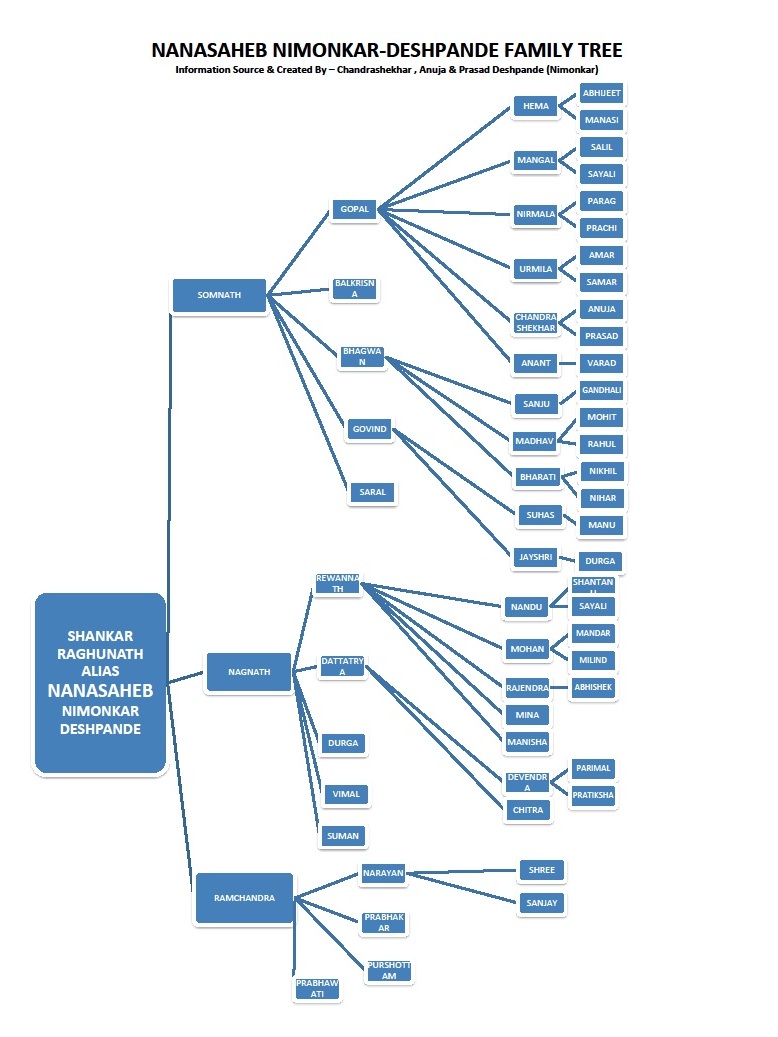
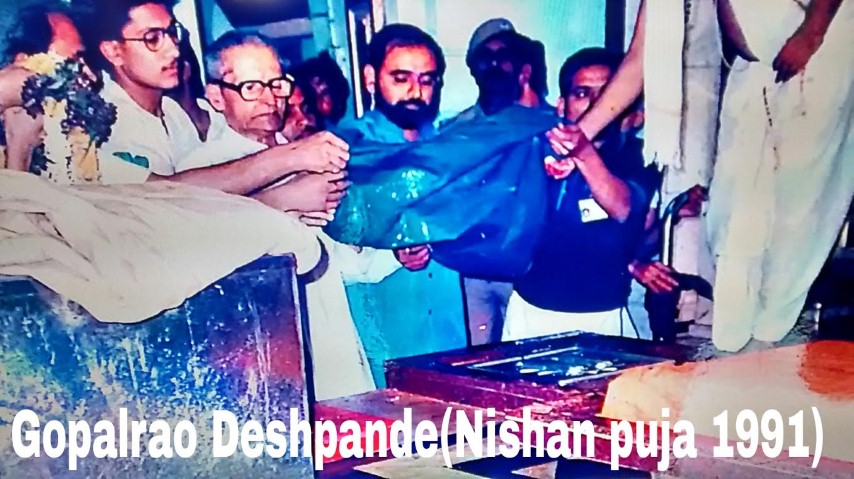
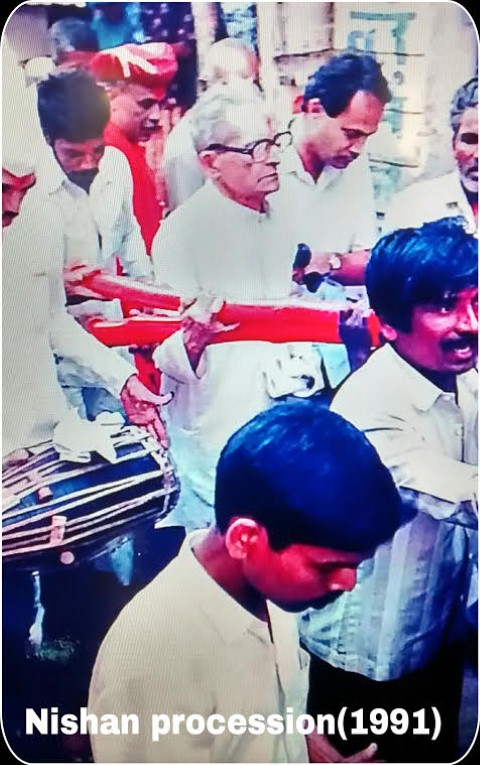
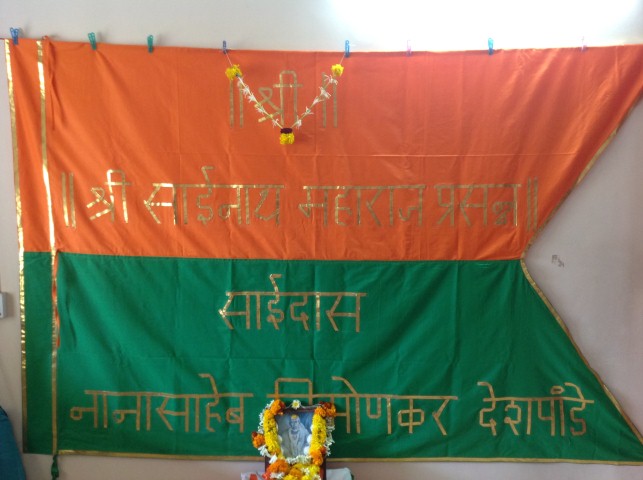
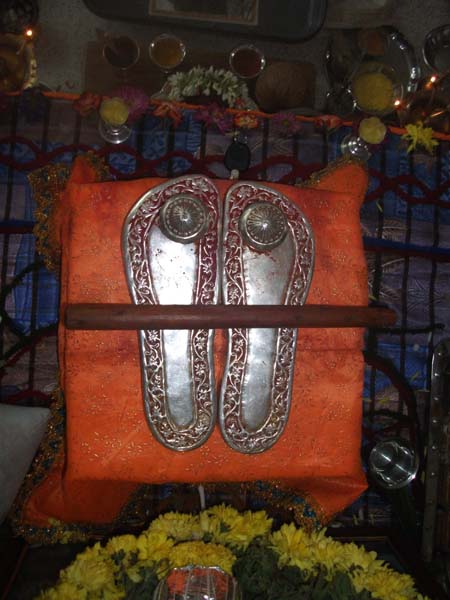
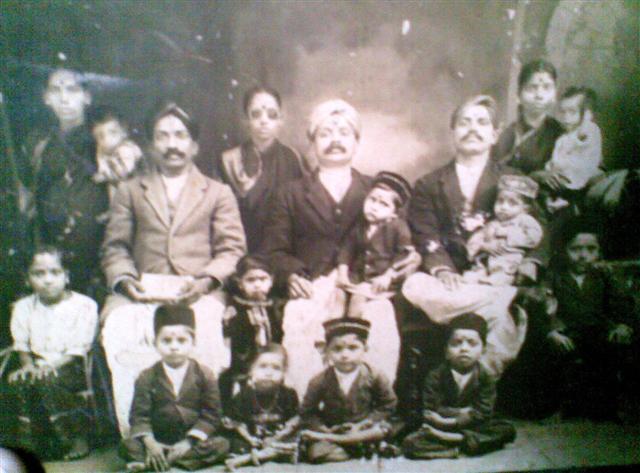
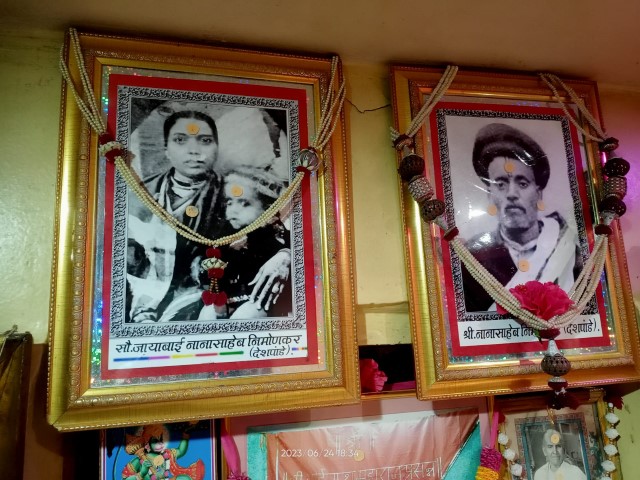

.jpg)
.jpg)
.jpg)
.jpg)